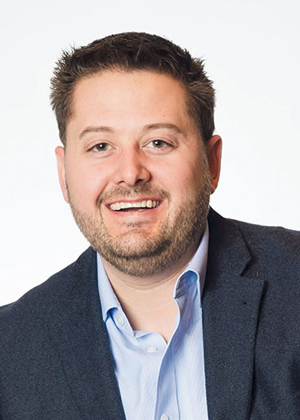Kurt Maschari, BEST Restaurant Equipment & Design Inc., Columbus, Ohio
It’s not often a college student joins a foodservice equipment dealership right after graduating, but Kurt Maschari’s education and experience made him a sought-after candidate from the beginning.
 Kurt MaschariMaschari got his feet wet in foodservice first bussing tables at age 13, then spent his youth as a cook, server and bartender. After graduating from The Ohio State University with an architecture degree, Maschari applied what he knew from his many years working on the operations side to a role as a restaurant designer in a dealer’s CAD design department. “I worked mainly on independent restaurants and institutional projects, completing drawings and designs for the salespeople,” says Maschari. “I then moved into a sales position with another dealer, concentrating on bid and spec work.”
Kurt MaschariMaschari got his feet wet in foodservice first bussing tables at age 13, then spent his youth as a cook, server and bartender. After graduating from The Ohio State University with an architecture degree, Maschari applied what he knew from his many years working on the operations side to a role as a restaurant designer in a dealer’s CAD design department. “I worked mainly on independent restaurants and institutional projects, completing drawings and designs for the salespeople,” says Maschari. “I then moved into a sales position with another dealer, concentrating on bid and spec work.”
Maschari joined BEST Restaurant Equipment & Design Inc. two years later, first managing bid and spec work, then getting more into design/build projects. Maschari began adding chains to his portfolio about three years ago. He’s been with the company for almost eight years. “My architecture background has helped me understand design, and my operations background helps with space and use requirements,” he says.
FE&S: How has kitchen/foodservice design evolved for the better since you first started in this business?
KM: From a designer standpoint, there’s better technology than when I started 12 years ago. At that time, it was mainly two-dimensional. With today’s software, we can now create 3-D designs and virtual reality. It’s possible to walk through a space that’s under construction and see how it will look when it’s complete on a smartphone. On the sales side, manufacturer information is more accessible and up to date. We now have more accurate information at our fingertips. On the manufacturing side, equipment has been made more versatile for today’s shrinking kitchens. We can do more with less.
FE&S: When working on contract/bid projects, there can be a variety of pressures, including deadlines, budgets and more. How do you balance these pressures while not compromising the quality of the design?
KM: Oftentimes, after the project goes out to bid, the budget becomes a point of contention and concern. Everyone is looking at cost-saving ideas and value-engineering alternatives. We try to work with end users and designers or consultants to get insight on the design intent, operator’s needs, spatial constraints and workflow requirements while looking at value-engineering alternatives. To conserve space, we can add multifunctional equipment to get numbers more in line. We also can look for ways to streamline the schedule by substituting standard in-stock equipment for custom fabricated pieces to stay on deadline. The best way to get costs down is to communicate with end users early on and throughout the project.
FE&S: How does 3-D technology help you work with your clients?
KM: Culinary teams may know the concept and menu but can’t always distinguish the difference between a charbroiler and six-burner range on a plan. The 3-D imaging shows them how the kitchen flows and has helped decrease last minute changes. They can do a simulated walk-through ahead of time, so we’re able to fix sight lines and clean up aesthetics earlier. We also use the BIM technology to coordinate with the trades to avoid clashes in the field. The number of man hours saved on-site with this technology is something you can’t calculate.



